The towns and villages of France host many annual festivals, celebrating everything from patron saint days to
cassoulet, and pretty much anything in between. All are cause to have a party and are wonderful occasions to get out and enjoy the regional food and culture of La Belle France. The Languedoc region is no exception, with even the tiniest of villages hosting at least one fête each year.
 Festival Flamenco à Nîmes
Festival Flamenco à Nîmes
(January)
This festival, held at the
Théâtre de Nîmes, attracts the great masters of Spanish flamenco dancing, as well as guitarists and singers. Come to enjoy performances of this exciting and romantic Andalusian art form. (Tickets are required)
Le Poulain de Pézenas
(Festival held for 3 Days preceding Lent)
Like several of the surrounding towns and villages, Pézenas has a "totem animal"; in this case a huge horse called
Le Poulain (
lo poulain or
lo polin in Occitan), which means "the colt". It makes appearances at festivals and parades throughout the year, especially for the
Le Poulain de Pézenas celebration preceding Lent.
Le Poulain is said to commemorate a visit to the town in 1226 by Louis VIII, during which the king's favorite mare fell ill. She had to be left behind in Pézenas while Louis continued with the Albigensian Crusade. On his return he was astonished to find that not only was his mare now fully recovered, but she had also given birth to a fine colt, which was duly presented to him, adorned with ribbons. In return he decreed that the town should construct a wooden colt to be used to celebrate all its public festivities. The first mention of the custom is in 1615.
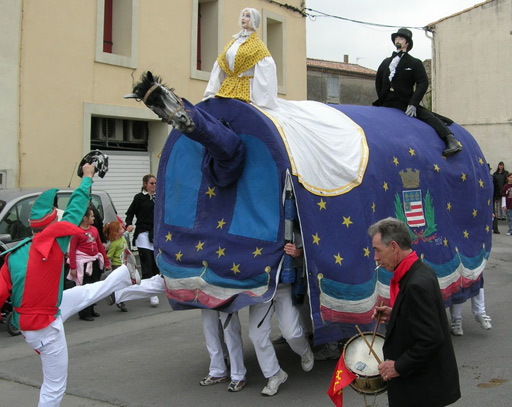 Medieval Festival in Sommieres
Medieval Festival in Sommieres
(First weekend in April)
The first weekend in April each year, this beautiful town comes alive with a street festival featuring costumed merchants, performers, music and street markets.
 Grands jeux romains à Nîmes (Great Roman Games of Nîmes)
Grands jeux romains à Nîmes (Great Roman Games of Nîmes)
(May)
Held annually in Nîmes, this festival features events that highlight the age of the Roman Empire. Over 400 elaborately costumed re-enactors stage charriot races, gladiator fights, and mock battles. There are activities throughout the town, including in the
Arènes de Nîmes, the historic Roman amphitheater.
Festival National de Theatre Amateur in Narbonne
(Late June/Early July)
Nightly performances are held on the
Cours de la Madeleine at the Archbishop's Palace.
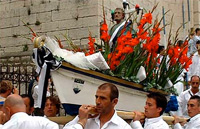 Fête de la St-Pierre in Sète
Fête de la St-Pierre in Sète
(First weekend in July)
In early July, on the feast day of St. Peter, patron saint of fisherman, the residents of Sète come together to honor those who have been lost at sea, and ask for protection for those who make their livelihood on the water. A parade carries a statue of St. Peter through the streets, then aboard a boat which is joined by a procession of fishing trawlers festooned with flags and flowers. After the procession there is a water jousting tournament. Mix this in with the delicious local seafood, and an ample supply of rosé to wash it down, and it is impossible not to have a fabulous time.
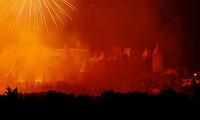 Bastille Day
Bastille Day
(July 14th)
Bastille Day is celebrated nation-wide in France, with fireworks displays, parades, music, and other events. Carcassonne is one of the more spectacular locations to watch the fireworks lighting up the night sky over the ramparts of the historic walled
cité. Narbonne also features an excellent Bastille Day pyrotechnics display, along with a four day celebration in the Cours Mirabeau.
Festival de Radio-France in Montpellier
(held annually in July)
This international music festival features all music genres from classical to jazz. Events and live performances are held at various venues across the city.
 Fiesta de Sète
Fiesta de Sète
(Late July/Early August)
The Festival de Sète is a two-week long Mediterranean music festival covering folk and pop music from North Africa and Europe. The festival takes place in late July to early August. There is plenty of street theatre and parties going on, as well as nightly performances in the
Theatre de la Mer.
Beaucaire Medieval Fair
(4th week of July)
Beaucaire is famous for its annual Medieval fair held annually since 1217. The fair was originally established to commemorate a famous victory against Simon de Montfort's forces. At its height this fair would attract over 300,000 people.
Festival d'Avignon
(mid-July)
The Festival d'Avignon is a 'can't miss' for lovers of theatre, dance and contemporary art, considered a major event, and a must see on the French theatrical calendar. The
Festival d'Avignon draws the attention of professionals and amateurs from all over the world, and has over the years amassed a large number of faithful observers and commentators from France and abroad.
 Grand Prix de la Saint-Louis à Sète
Grand Prix de la Saint-Louis à Sète
(End of August)
Every year at the end of August the
Grand Prix de la Saint-Louis à Sète, the unofficial world championship of water jousting, is held in conjunction with the festival of Saint Louis. Competitors must be invited by the city to participate. The sport of water jousting (
les joutes languedociennes) is an important element of local culture. Tournaments are held from April to September on the Canal Royal in the center of town, and are the highlight of the summer festivals. The competition involves two wooden row boats, one blue and one red, manned by a team of rowers. The jousters, wielding wooden lances and shields, are positioned on a raised platform (
la tintaine) at the stern of the boats. The boats are rowed toward each other, and as one would expect, the jousters attempt to dislodge each other from their platform, sending the loser for a swim in the canal.
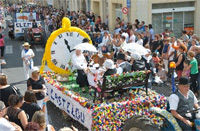 Fête du Cassoulet de Castelnaudary
Fête du Cassoulet de Castelnaudary
(Late August)
Castelnaudary has a massive week-long festival to celebrate
cassoulet, the traditional dish of duck, sausage, white beans and duck fat said to have originated in Castelnaudary. Festivities include canal sports, live bands, dancing, street entertainers, and of course,
cassoulet. Main street is taken over by tents with long trestle tables where everyone enjoys this local specialty.
La Feria in Beziers
(Late August)
Some say this is the greatest Languedoc festival. Beziers comes alive in spectacular fashion with fireworks, street entertainment, and a daily Spanish
corrida. This is also an important wine festival.
Le Grau/Port Camargue
(Second Week of September)
This fête includes bull-running through the streets,
Camarguaises horsemanship, and water-jousting, together with lots of street parties and all-around merry-making.
Les Primeurs d'Oc in Beziers
(October)
The premier wine festival of the Languedoc,
Les Primeurs d'Oc in Beziers features wine contests and awards, together with music, dance, and theater.
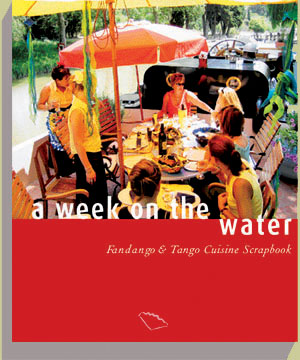 Founder of Boutique Hotel Barges and "A Week on the Water" author, Hazel Young, is a graduate of the French National Cooking School in Beaune. She has run numerous cooking seminars and culinary cruises aboard her former barge Fandango, and planned the boutique barge's extraordinary menus for over two decades.
Founder of Boutique Hotel Barges and "A Week on the Water" author, Hazel Young, is a graduate of the French National Cooking School in Beaune. She has run numerous cooking seminars and culinary cruises aboard her former barge Fandango, and planned the boutique barge's extraordinary menus for over two decades.  Festival Flamenco à Nîmes
Festival Flamenco à Nîmes
 Grands jeux romains à Nîmes (Great Roman Games of Nîmes)
Grands jeux romains à Nîmes (Great Roman Games of Nîmes) Fête de la St-Pierre in Sète
Fête de la St-Pierre in Sète Bastille Day
Bastille Day Fiesta de Sète
Fiesta de Sète Grand Prix de la Saint-Louis à Sète
Grand Prix de la Saint-Louis à Sète Fête du Cassoulet de Castelnaudary
Fête du Cassoulet de Castelnaudary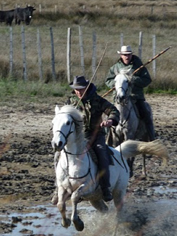
 "Le Beaujolais Nouveau est arrivé !" This is a phrase you're likely to hear every year on the third Thursday in November, at 12:01 a.m. local time around the globe, as the newest vintage of wine from France's Beaujolais region is released to the public. This wine, fermented for just a few weeks, is known as Beaujolais Nouveau. It is a red wine made from Gamay grapes that are grown and harvested by hand in the Beaujolais province, at the southern tip of Burgundy.
"Le Beaujolais Nouveau est arrivé !" This is a phrase you're likely to hear every year on the third Thursday in November, at 12:01 a.m. local time around the globe, as the newest vintage of wine from France's Beaujolais region is released to the public. This wine, fermented for just a few weeks, is known as Beaujolais Nouveau. It is a red wine made from Gamay grapes that are grown and harvested by hand in the Beaujolais province, at the southern tip of Burgundy.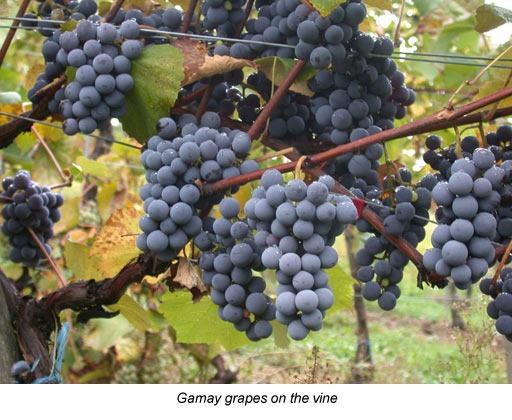

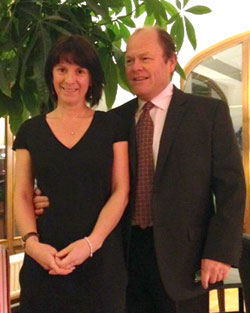 Each year, on the third weekend of November, Beaune plays host to the world's most famous charity wine auction. Professionals, connoisseurs and wine lovers come together for two days of festivities, the epitome of pure Burgundy tradition.
Each year, on the third weekend of November, Beaune plays host to the world's most famous charity wine auction. Professionals, connoisseurs and wine lovers come together for two days of festivities, the epitome of pure Burgundy tradition.

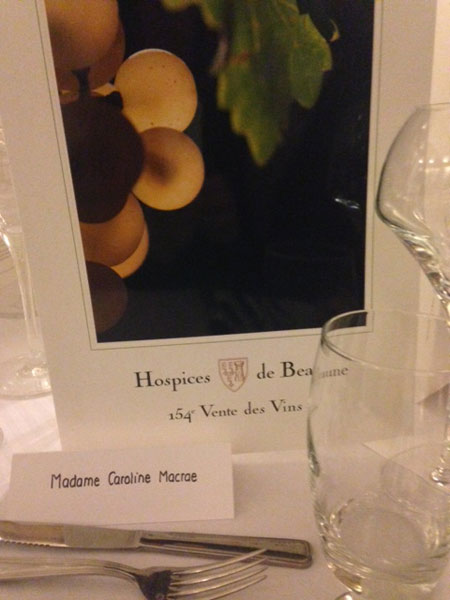



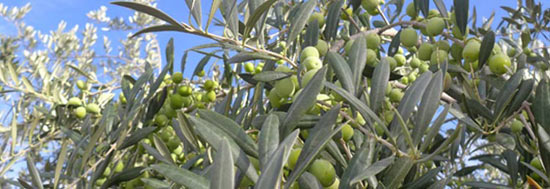
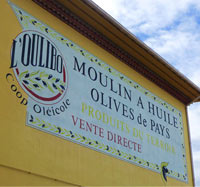 A Visit to the Olive Mill
A Visit to the Olive Mill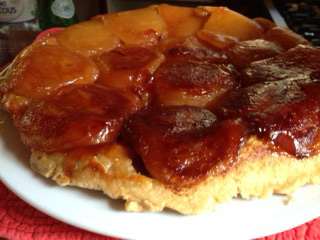
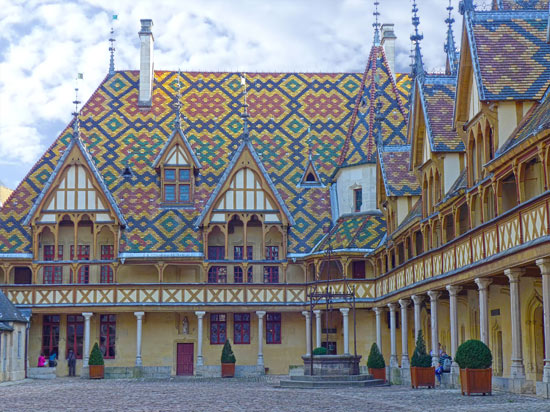
 Although there are no Grand Cru vineyards in Beaune, many of the vats and cellars where wines are fermented and aged are located within the city. It is a hub for the wine industry, with suppliers of tractors and other wine-making equipment located here, as well as a number of wine-related institutes and associations. It is also headquarters for many négociants, the wine merchants who purchase the products of smaller growers and winemakers, to be bottled and sold under a larger domaine's label.
Although there are no Grand Cru vineyards in Beaune, many of the vats and cellars where wines are fermented and aged are located within the city. It is a hub for the wine industry, with suppliers of tractors and other wine-making equipment located here, as well as a number of wine-related institutes and associations. It is also headquarters for many négociants, the wine merchants who purchase the products of smaller growers and winemakers, to be bottled and sold under a larger domaine's label. Beaune is an ancient city, whose settlement pre-dates Roman times. Its history continues through the Middle Ages and Renaissance, and survives today, with about half of the battlements, ramparts, and moat of the Medieval walled city remaining intact.
Beaune is an ancient city, whose settlement pre-dates Roman times. Its history continues through the Middle Ages and Renaissance, and survives today, with about half of the battlements, ramparts, and moat of the Medieval walled city remaining intact.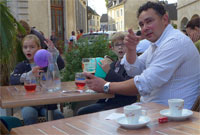 The older section of the city features a cluster of shops and cafés around the central square. Shop here for wine (of course!), as well as other gourmet French treats, and fashionable clothing. An afternoon stroll to window-shop, stopping at an outdoor cafe for a pick-me-up, provides great entertainment in itself.
The older section of the city features a cluster of shops and cafés around the central square. Shop here for wine (of course!), as well as other gourmet French treats, and fashionable clothing. An afternoon stroll to window-shop, stopping at an outdoor cafe for a pick-me-up, provides great entertainment in itself.